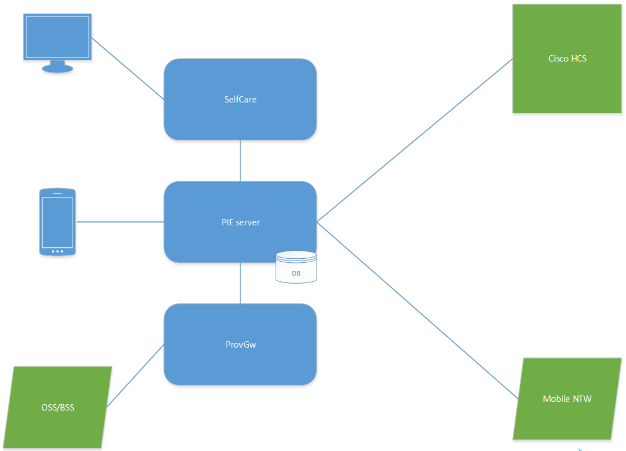A simple FMC redirect server could be the answer
Classically a FMC solution that works with mainstream Hosted Platforms employs SIP soft clients running on smartphones and relies on either wifi or the mobile data network for connectivity. The Netaxis solution uses the mobile voice channel offering more reliable connectivity with less drain on the handset battery.
Intro
I’ve been in the VoIP game for a good 16 years now and for much of that time convergence has been a subject of debate. The initial VoIP pitch was converging onto a single network. Then Communications Providers began converging services onto one bill. Single point of contact. One throat to choke if it goes wrong. Easy enough really.
The whole issue of Fixed Mobile Convergence has been a little thornier. Unless you own a mobile network then this is not a readily achievable goal. It’s easy enough to provide VoIP clients for mobile devices. I use CSIP Simple for example. However this just provides mobility to your fixed line and depends on the availability of good IP network connectivity. Call quality is very hit and miss and whilst I haven’t properly tested it (probably difficult to do anyway) it certainly feels as if battery life is not as good.
Netaxis PIE redirect server
Recently I’ve been doing some work with Netaxis Solutions of Belgium. These are a neat bunch of engineers with long experience in the telecoms game. As well as having an established systems integration business (string of equipment vendor certs) they have developed a number of essential telco software services as a result of demand from their Benelux based Tier 1 and Tier 2 customers.
The software modules include: ENGO fraud management, DORY cal simulator, PIE provisioning server and NEMO network monitoring and management software.
Netaxis have now moved into Fixed Mobile Convergence by extending the capabilities of their PIE server. When used in conjunction with a softswitch platform such as Broadsoft, Microsoft or Cisco HCS PIE acts as a redirect server between the fixed and mobile networks. Tango of Luxembourg have already launched services with three others in the pilepline.
What does it look like to the end-user?
Companies can easily integrate employees mobile devices with their company phone system (be it a CP provided hosted solution or their own). Employees making calls can choose to have those calls seen as coming from their own mobile number or that of the company. Inbound calls to either fixed or mobile numbers are controlled by the hosted PBX and routed as required.
How it actually works
Mobile user can choose between 2 modes: “business” and “private” (personal).
- In private mode handset acts just like a “normal” mobile device showing the mobile CLI.
- In business mode mobile phone becomes a new Broadsoft (or Cisco HCS or Skype for Business) user device aka a PC client or deskphone. Calls initiated by the mobile device will be handled by Broadsoft as if they were a Broadsoft user and will show the fixed CLI associated with their user account.
Inbound calls to a Broadsoft user will initiate parallel calls to all subscribed devices for that account including the mobile device. For calls to voicemail the pertinent mailbox will be used – business voice mail for Broadsoft and mobile voice mail for private usage. For billing, business calls will generate Broadsoft Call Data Records. Private calls will generate mobile network CDRs.
Why is this important?
This proposition has several very positive business benefits for Network Operators.
- A incentive for existing fixed customers to add mobile minutes
- An enticement for CPs who are not yet customers
Do you need a mobile network to offer this service?
Yes you do need a mobile network. However it is a lot easier for Network Operators to offer Fixed Mobile Services on a wholesale basis with the Netaxis solution because all that is required is a simple prefix for each reseller that allows calls from their customers to be routed via the PIE server. No messing about in the core of the network
How would CP’s sell this on?
The CP can either resell mobile sims to their customers (easy and fast solution) or setup a MVNO relationship with the Network Operator and resell their own sims. In both cases no network infrastructure needs to be implemented by the CP. It is all implemented by configuring the Redirect server and the Routing of the calls inside the network.
This is a simple service that allows enormous scope for CPs to offer creative packages to their customers.
Conclusion
I think this product has the potential to be of huge interest to Mobile Operators worldwide. It is a simple concept that bypasses the need for heavy fixed and mobile network integration and is easy for the end user to get their brain around. Moreover it makes use of the more reliable cellular network rather than the mobile data connection.
Network Operators will see the service is a way of attracting new CP customers and to grow sales of existing partners. Business customers of CPs will see the benefit because it offers an easy way to separate work and personal use of their employees on a single mobile handset.

